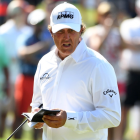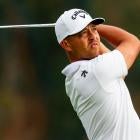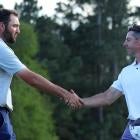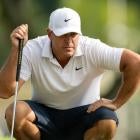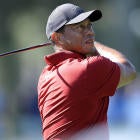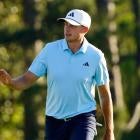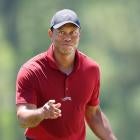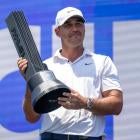There have been 73 major championships in golf played this century. That's 19 Masters and 54 of the other three ahead of the 2018 U.S. Open at Shinnecock Golf Club. Following Patrick Reed's win at Augusta, I went back and gathered data on third-round leaders of all 73 of these events. I wanted to see who the best closers were and who had the most chances at winning the four big ones.
Right away, I knew analyzing this data would be tricky. It wasn't hard to gather third round leaderboards from all four majors, but determining what was a real chance at winning was tough. Ultimately I settled on the following criteria.
- Within 5 strokes of the lead with fewer than five golfers in front of you
- Within 4 strokes of the lead with fewer than six golfers in front of you
- Within 3 strokes of the lead with fewer than seven golfers in front of you
Is this a perfect way to measure a real shot at a major? No, probably not. But to me, it's as good as any I could have constructed. One example of why it's bad is that not all leads are created equal. Tiger Woods leading by three at Augusta on a Saturday evening is wildly different than Ben Curtis leading by one at Oakland Hills on a Saturday evening. Therefore, not all "chances" are created equal. It's important to remember that as we look through the numbers.
However, I do think the qualifications allow us to see what I'm getting at. There was something Rory McIlroy said after the Masters this year that resonated with me.
"Of course it's frustrating," McIlroy said. "It's hard to take any positives from it right now, but at least I put myself in the position. That's all I wanted to do. The last four years I've had top 10s, but I haven't been close enough to the lead. Today I got myself there. I didn't quite do enough. But, you know, come back again next year and try."
Forget about Thursday, Friday and Saturday. Did you put yourself in the heat on Sunday? That's all most players are trying to do. And after watching Jordan Spieth nearly shoot a 62 to get into a playoff at the Masters, I cast as wide a net as I felt reasonable to cast.
What my criteria allowed for is to eliminate fake contention. Also known as backdoor top 10s. McIlroy has finished in the top 10 four times at the Masters in the last four years, but of those, he only gets one tally mark under the "real chance at a major" column. He trailed leader Patrick Reed by three on Saturday evening with nobody between them. That's a real shot.
Anybody on the PGA Tour can go out and shoot 65 on a random day just as anyone can go out and shoot 75. But to put yourself in position to do so in the final round of a major championship is a very difficult thing to do. Oftentimes 18 holes can be relatively random, but it's tough for the preceding 54 to contain as much randomness. So there is a long list of things we are not measuring here and a short list of things we are measuring. Contention on Sunday at majors -- real contention -- is the primary focus of these numbers.
We will break down the numbers in parts, but first a look at some wild cards to whom the criteria did not fit. Of the 73 tournaments I looked at and applied my numbers to, only five golfers won when they didn't have a shot based on the criteria I laid out. Unsurprisingly, all of these came at one of the Opens where weather and poor play can exacerbate scores. Here are those five in order of when they happened.
2007 U.S. Open: Angel Cabrera trailed Aaron Baddeley by eight with six players in front of him. This is obviously well outside our criteria, but Cabrera shot a 69 on the final day at Oakmont and clipped Jim Furyk (who started the day tied with him) and Tiger Woods (who started two ahead) by one stroke each. Baddeley shot an 82.
2007 Open: Padraig Harrington started the final round at Carnoustie six down to Sergio Garcia (albeit with just one player between them). They ended up in a playoff after Garcia shot 73 and Harrington shot 67. Harrington took the playoff by one.
2012 U.S. Open: Webb Simpson started four back of leaders Jim Furyk and Graeme McDowell but had seven (!) golfers in front of him. As they started to fade one by one, though, Simpson played the back nine at Olympic Club in 1 under and beat McDowell and Michael Thompson by one. It remains his only top 10 at a major championship.
2012 Open: This was the infamous Adam Scott collapse where he bogeyed the final four holes at Royal Lytham and St. Annes. Ernie Els was T5 after three rounds but down six to Scott. He shot a 68 to Scott's 75 to win by one.
2013 Open: Phil Mickelson started Sunday T9, five back of leader Lee Westwood with Henrik Stenson, Adam Scott, Angel Cabrera, Zach Johnson and Tiger Woods ahead of him. His 6-under 66 was an absolute revelation (only nine players broke 70 all day) and he somehow won by three over Stenson.
As you can see, these are pretty extreme outliers that involved either total collapse from a leader or an out-of-body experience from the winner. They are not the norm. It's also important to note that four of the five winners were one stroke from being within my criteria after three rounds. The only one who wasn't was Cabrera, and again, Baddeley shot 82. The other 68 major winners since 2000 fell within the criteria listed above, and we will start looking at them later this week.












